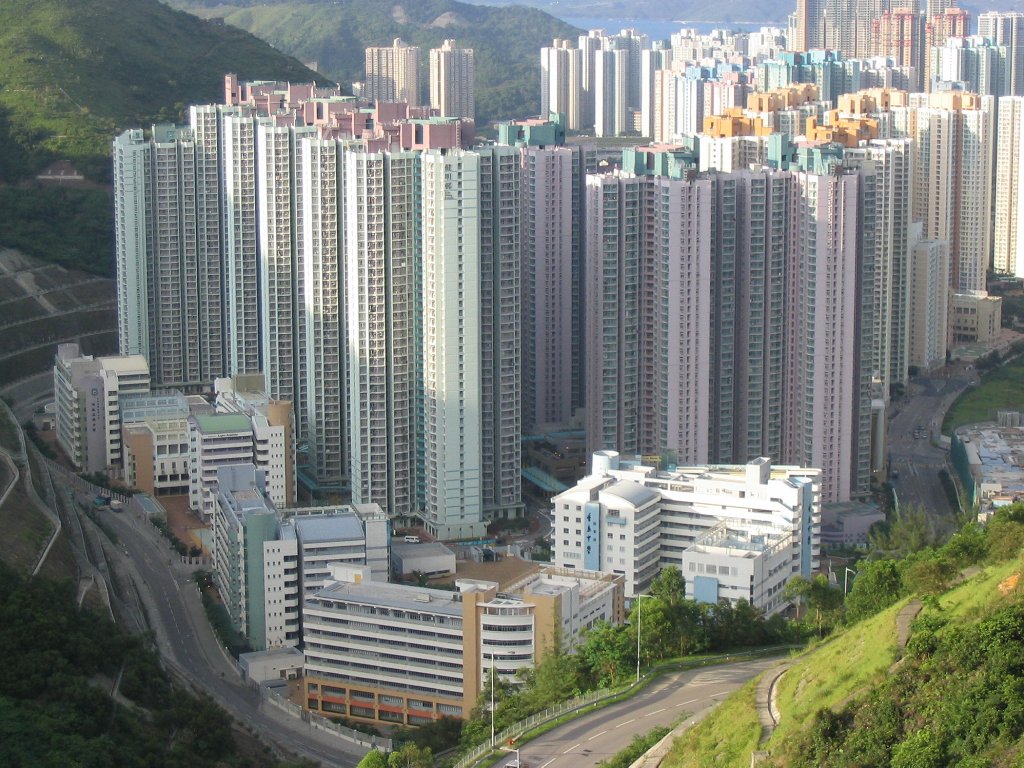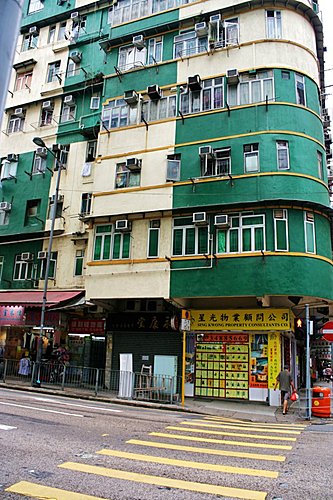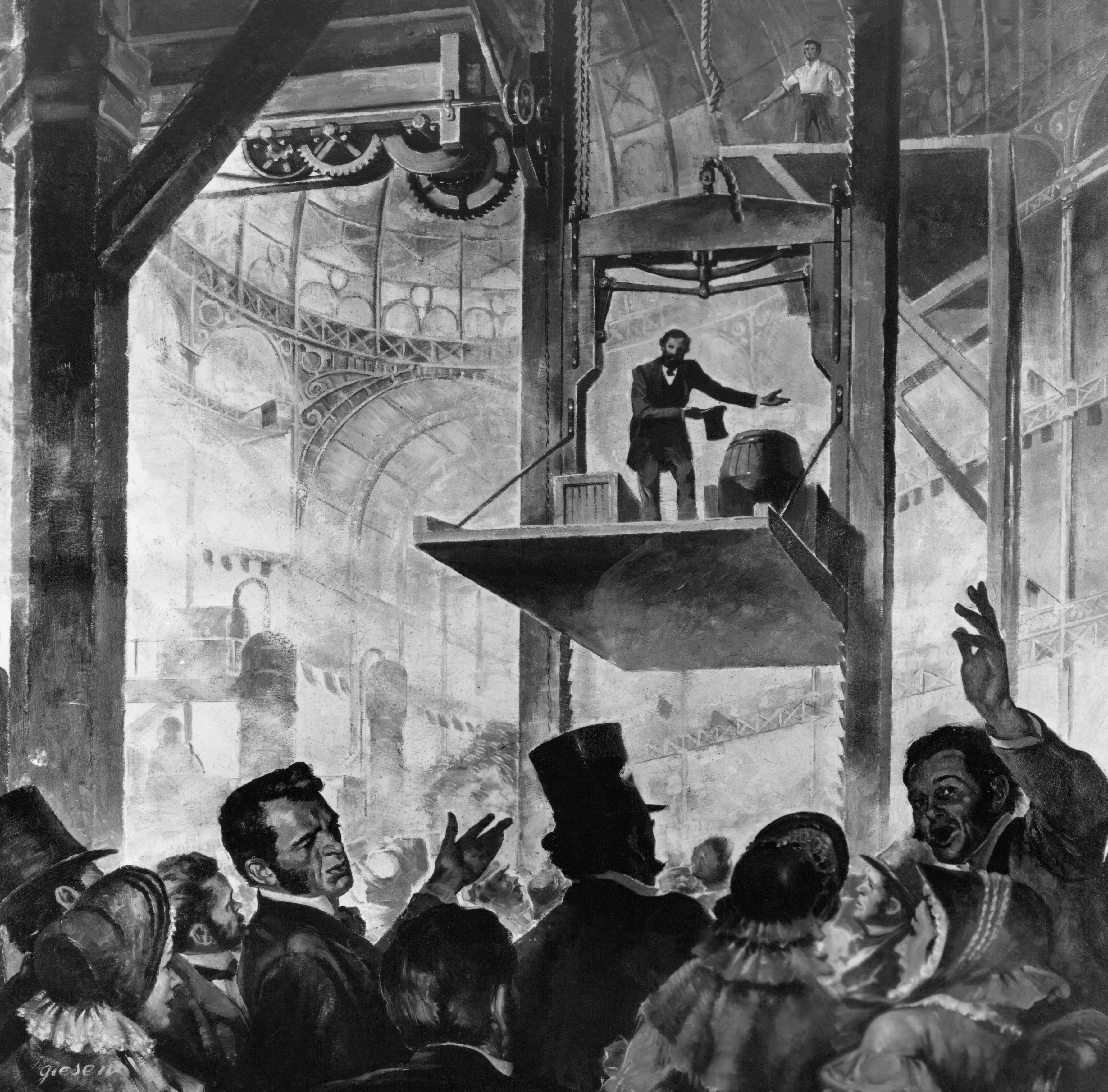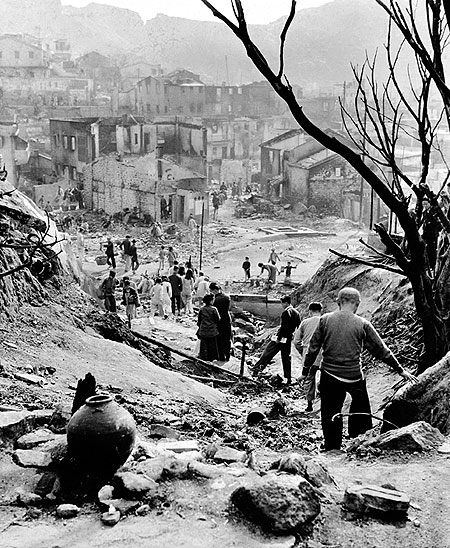|
Public Housing In Hong Kong
Public housing in Hong Kong is a set of mass housing programmes through which the Government of Hong Kong provides affordable housing for lower-income residents. It is a major component of housing in Hong Kong, with nearly half of the population now residing in some form of public housing. The public housing policy dates to 1954, after Shek Kip Mei Fire, a fire in Shek Kip Mei destroyed thousands of shanty town, shanty homes and prompted the government to begin constructing homes for the poor. Public housing is mainly built by the Hong Kong Housing Authority and the Hong Kong Housing Society. Rents and prices are significantly lower than those for Private housing estates in Hong Kong, private housing and are heavily subsidy, subsidised by the government, with revenues partially recovered from sources such as rents and charges collected from car parks and shops within or near the residences. Many public housing estates are built in the New towns of Hong Kong, new towns of the N ... [...More Info...] [...Related Items...] OR: [Wikipedia] [Google] [Baidu] |
Kin Ming Estate
Kin Ming Estate () is a public housing estate in Tiu Keng Leng, Tseung Kwan O, New Territories, Hong Kong, near MTR Tiu Keng Leng station. It is the eighth public housing estate in Tseung Kwan O and consists of ten housing blocks completed in 2003. Background Kin Ming Estate was formerly the site of Tiu Keng Leng Cottage Area, an area settled by Kuomintang Army in Hong Kong after Chinese Civil War The Chinese Civil War was fought between the Kuomintang-led Nationalist government, government of the Republic of China (1912–1949), Republic of China and the forces of the Chinese Communist Party (CCP). Armed conflict continued intermitt ... ended in 1949. After the area was demolished in 1997, a massive clearance, reclamation and redevelopment programme was carried out. The Tiu Keng Leng slope was flattened into two huge platforms to construct Kin Ming Estate and Choi Ming Court on the reclaimed land afterwards. Kin Ming Estate was originally a HOS court called Kin ... [...More Info...] [...Related Items...] OR: [Wikipedia] [Google] [Baidu] |
Subdivided Flat
Subdivided flats (also called subdivided units) are Apartment, flats divided into two or more separate units to house more people. The flats' original partition walls are usually removed, and new ones are erected. New toilets and kitchens are installed, and internal Downspout, drains are added or altered. These updates can compromise the building's safety and hygiene. Hong Kong It is estimated that 280,000 people live in subdivided flats or other similarly undesirable conditions, mostly located in old residential buildings. According to a study by the Society for Community Organisation, Society for Community Organization, people living in subdivided flats are mainly unemployment, unemployed citizens, low-income families and new immigrants. The median living area per person of a subdivided flat was found to be 40 square feet for small suite and 30 square feet (2.8 sqm) for cubicle in 2009. Causes Housing shortage The insufficient supply of housing in Hong Kong is one of the ... [...More Info...] [...Related Items...] OR: [Wikipedia] [Google] [Baidu] |
Elevator
An elevator (American English) or lift (Commonwealth English) is a machine that vertically transports people or freight between levels. They are typically powered by electric motors that drive traction cables and counterweight systems such as a hoist, although some pump hydraulic fluid to raise a cylindrical piston like a jack. Elevators are used in agriculture and manufacturing to lift materials. There are various types, like chain and bucket elevators, grain augers, and hay elevators. Modern buildings often have elevators to ensure accessibility, especially where ramps aren't feasible. High-speed elevators are common in skyscrapers. Some elevators can even move horizontally. History Pre-industrial era The earliest known reference to an elevator is in the works of the Roman architect Vitruvius, who reported that Archimedes ( – ) built his first elevator probably in 236 BC. Sources from later periods mention elevators as cabs on a hemp rope, powered by people o ... [...More Info...] [...Related Items...] OR: [Wikipedia] [Google] [Baidu] |
Mei Ho House
Mei Ho House (), formerly part of Shek Kip Mei Estate, Hong Kong, is the last remaining example of a "Mark Blocks, Mark I" building in a single-block configuration. While the other buildings of the estate dating from the 1950s have been demolished, being replaced by new ones, Mei Ho House was chosen to Heritage conservation in Hong Kong, be preserved and was reopened in 2013 as a youth hostel and heritage museum. History After a devastating Shek Kip Mei fire, fire in December 1953 that left thousands homeless, the British Hong Kong, Colonial government built a 29-block Resettlement area, resettlement estate on the site of the burnt-down shanties to house the homeless victims. Eight blocks (Blocks A to H), later renumbered as Blocks 10 through 13 and 35 through to 41, were constructed with the financial aid of the United Nations (Mei Ho House is Block H, later Block 41). These 7-storey blocks were constructed in the Bauhaus architectural style with an 'H' configuration consistin ... [...More Info...] [...Related Items...] OR: [Wikipedia] [Google] [Baidu] |
Urban Council Of Hong Kong
The Urban Council (UrbCo) was a municipal council in Hong Kong responsible for municipal services on Hong Kong Island and in Kowloon (including New Kowloon). These services were provided by the council's executive arm, the Urban Services Department. Later, the equivalent body for the New Territories was the Regional Council. The council was founded as the Sanitary Board in 1883. It was renamed the Urban Council when new legislation was passed in 1936 expanding its mandate. In 1973 the council was reorganised under non-government control and became financially autonomous. Originally composed mainly of ''ex-officio'' and appointed members, by the time the Urban Council was disbanded following the Handover it was composed entirely of members elected by universal suffrage. History The Urban Council was first established as the Sanitary Board in 1883. In 1887, a system of partial elections was established, allowing selected individuals to vote for members of the Board. On ... [...More Info...] [...Related Items...] OR: [Wikipedia] [Google] [Baidu] |
Resettlement Department
The Resettlement Department () was a department of the Government of Hong Kong, responsible for constructing resettlement estates for homeless refugees, established in 1954. In 1973, the Resettlement Department and the Building Section of the Urban Services Department were merged to form the Housing Department, which acts as the Housing Authority's executive body. History In December 1953, a major fire destroyed the slum area in Shek Kip Mei and more than 50,000 refugees from Mainland China "Mainland China", also referred to as "the Chinese mainland", is a Geopolitics, geopolitical term defined as the territory under direct administration of the People's Republic of China (PRC) in the aftermath of the Chinese Civil War. In addit ... were made homeless. After the disaster, then Governor Alexander Grantham, Sir Alexander Grantham ordered Ronald Holmes to establish the Resettlement Department and appointed him as the Deputy Chief Secretary for Administration, Colonial Se ... [...More Info...] [...Related Items...] OR: [Wikipedia] [Google] [Baidu] |
Shek Kip Mei Estate
Shek Kip Mei Estate is the first public housing estate in Hong Kong. It is located in Sham Shui Po and is under the management of the Hong Kong Housing Authority. The estate was constructed as a result of a fire in Shek Kip Mei in 1953, to settle the families of inhabitants in the squats over the hill who lost their homes in one night. Originally constructed in 1953 to alleviate the immediate housing needs, the units in this " Mark I" estate were utilitarian. Redevelopment of the estate commenced in 1972, with new towers coming on stream between 1979 and 1982. Site 1 of redevelopment was occupied in 2007. The estate now consists of 21 residential blocks, containing 10,800 rental flats. The estate has an authorised capacity of 26,400. History Following the Second World War, a large number of migrants from the mainland arrived in Hong Kong. Due to the lack of housing policy, and thus non-availability of affordable housing, the migrants lived illegally in wooden shanties in ... [...More Info...] [...Related Items...] OR: [Wikipedia] [Google] [Baidu] |
Hong Kong University Press
Hong Kong University Press (abbreviated as HKU Press) is the university press of the University of Hong Kong. It was established in 1956 and publishes more than 50 titles per year in both Chinese and English. Most works in English are on cultural studies, film and media studies, Chinese history and culture. Brief Hong Kong University Press was established in 1956. At the beginning of the establishment, the press mainly published several books on studies done by the university's own faculty every year. It now releases between 30 and 60 new titles a year. All HKU Press publications are approved by a committee of HKU faculty and staff, which bases its decisions on the results of a rigorous peer-review process. HKU Press publishes most of its books (especially the academic books) in English and also brings out a lot of titles in Chinese. Also, since the first publication, HKU Press has used a bilingual (Chinese and English languages) publication program. Authors originate from var ... [...More Info...] [...Related Items...] OR: [Wikipedia] [Google] [Baidu] |
Alexander Grantham
Sir Alexander William George Herder Grantham, GCMG ( zh, c=葛量洪; 15 March 1899 – 4 October 1978) was a British colonial administrator who governed Hong Kong and Fiji. Early life, colonial administration career Grantham was born on 15 March 1899 and was educated at Wellington, the Royal Military College, Sandhurst, and Pembroke College, Cambridge. He was gazetted in the 18th Hussars in 1917 and joined the Colonial Administrative Service in Hong Kong in 1922. He was the Deputy Clerk of the Legislative Council of Hong Kong for a short period in 1933. In 1934, he was called to the Bar at the Inner Temple and attended the Imperial Defence College later that year. Grantham became Colonial Secretary of Bermuda from 1935 to 1938, and of Jamaica from 1938 to 1941. He then served as Chief Secretary of Nigeria from 1941 to 1944 and as Governor of Fiji and High Commissioner for the Western Pacific from 1945 to 1947. Immediately after his tenure as High Commissioner ended, ... [...More Info...] [...Related Items...] OR: [Wikipedia] [Google] [Baidu] |
Mainland China
"Mainland China", also referred to as "the Chinese mainland", is a Geopolitics, geopolitical term defined as the territory under direct administration of the People's Republic of China (PRC) in the aftermath of the Chinese Civil War. In addition to the geographical mainland, the geopolitical sense of the term includes islands such as Hainan, Chongming Island, Chongming, and Zhoushan. By convention, territories outside of mainland China include: * Special administrative regions of China, which are regarded as subdivisions of the country, but retain distinct administrative, judicial and economic systems from those on the mainland: ** Hong Kong, formerly a British Hong Kong, British colony ** Macau, formerly a Portuguese Macau, Portuguese colony * Taiwan, along with Penghu, Kinmen, Matsu Islands, Matsu and other minor islands, are collectively known as the Taiwan Area, where has been the major territorial base of the government of the Republic of China (ROC) since 1950. Though the ... [...More Info...] [...Related Items...] OR: [Wikipedia] [Google] [Baidu] |
Siu Hong Court
The following is an overview of public housing estates in Tuen Mun, Hong Kong, including Home Ownership Scheme (HOS), Private Sector Participation Scheme (PSPS), Sandwich Class Housing Scheme (SCHS), Flat-for-Sale Scheme (FFSS), Subsidised Sale Flats Project (SSFP), and Tenants Purchase Scheme (TPS) estates. History Tuen Mun used to be a rural area. At a time when the population had swelled dramatically with refugees from China, many of them living in substandard housing, the government launched a plan to provide modern housing to the masses. As part of this policy, Tuen Mun was developed as a new town from the early 1970s. Land was reclaimed from the sea in order to provide space suitable for development. Much of Castle Peak Bay was filled in. The first public housing estate in Tuen Mun was Castle Peak Estate, completed in 1971, which has since been demolished. Construction of the Tuen Mun New Town has been basically complete since the turn of the millennium, with most ... [...More Info...] [...Related Items...] OR: [Wikipedia] [Google] [Baidu] |
Lower Ngau Tau Kok Estate
Lower Ngau Tau Kok (II) Estate was a 7-block Public housing in Hong Kong, public housing estate built on Land reclamation in Hong Kong, reclaimed land in Ngau Tau Kok, Kwun Tong, Kowloon, Hong Kong, located opposite Kowloon Bay station on the MTR. The demolition of the estate started in March 2010. The estate, along with the Lower Ngau Tau Kok (I) Estate, which was demolished in June 2004, formed the Lower Ngau Tau Kok Estate. A new estate, retaining the name Lower Ngau Tau Kok Estate, is being constructed on the site. The estate was often described as the last Resettlement Area, resettlement estate in Hong Kong. History Lower Ngau Tau Kok Estate was formerly Ngau Tau Kok Village. It was built in the 1967 to 1969 as a resettlement estate. Ngau Tau Kok Estate was split into Lower Ngau Tau Kok Estate and Upper Ngau Tau Kok Estate in 1973. Blocks 8 to 12 were the first resettlement blocks in Hong Kong to be built with prefabricated parts. Year of intake for Lower Ngau Tau Kok (I ... [...More Info...] [...Related Items...] OR: [Wikipedia] [Google] [Baidu] |







